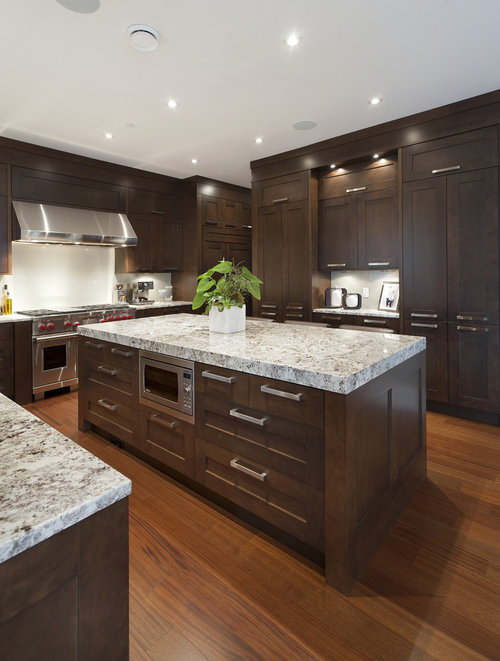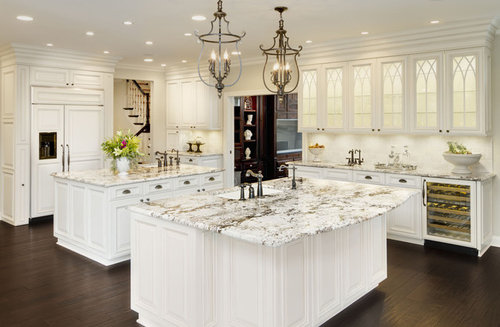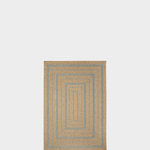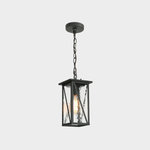Granite Countertops Cost
| Typical Cost | $2,050 |
|---|---|
| Typical Range | $1,750–$2,350 |
| Low End | $1,700 |
| High End | $2,400 |
Planning A Project?
Cost to Install Granite Countertops
The typical cost of new granite countertops is around $2,050, including materials and installation, for 30 square feet. The typical cost range of installing granite countertops is from $1,750 to $2,350, or $59 to $78 per square foot, though a high-end project can easily cost more. Ultimately, granite countertop prices will depend on the square footage you are covering, the product you choose and where your home is located.
Table of Contents:- How much do granite countertops cost?
- How much does granite cost without installation?
- How much does it cost to install granite countertops?
- What other factors can affect the cost of granite counters?
Granite counters are desirable for their distinct look — no two slabs are exactly alike. This natural stone is heat-, scratch-, chemical- and dent-resistant. However, granite does require regular sealing to help it resist stains and bacteria, so you’ll have to factor in yearly maintenance costs. It is UV-resistant, so it won’t fade over time, which also makes it a popular choice for outdoor use. While some people are opting for lower-maintenance engineered quartz countertops, there’s no substitute for the one-of-a-kind look that natural granite will bring to your kitchen or bathroom.
For more inspiration: Kitchen Counters: Granite, Still a Go-to Surface Choice
To stay within your budget, consider the type of granite, how many square feet you’ll need and how costly contractors are in your area. Countertop installation is a big home improvement job, so deciding on the product you want to purchase can be overwhelming. It’s highly recommended that you hire a granite countertop professional to help with the process.

Granite counter costs can vary widely for the material alone, running about $50 per square foot on average. With most granite varieties costing between $40 to $60 per square foot and rarer pieces costing much more, it’s easy to see how the product itself can significantly impact the total cost of your project. The level, or grade, of granite counters is based on factors such as color, availability, origin, shipping and distinctiveness. Since granite is a natural stone, quality does not determine the level assigned to a specific slab. A Level 1 slab could be just as high-quality as a Level 5, but rarity and distinctiveness cause them to be in different levels. Be sure to ask plenty of questions if you are interested in a certain look. Here is a breakdown of granite counter materials by level:
- Level 1: Simple, uniform designs and standard colors.
- Level 2: More unusual designs, markings and colors.
- Level 3: Distinct designs, markings and colors.
- Level 4: Highly distinct designs, markings and colors.
- Level 5 and Up: Rare and intricate designs, markings and colors.
Lower-quality granite slabs are typically softer and can therefore be cheaper; they won’t hold up as long and are more prone to scratches, chips and dents. You’ll find yourself replacing these sooner than higher-quality slabs if they aren’t properly cared for, so it’s worth it to invest in a better-quality piece the first time. Of course, you might be head over heels for a rare slab of granite that is softer than a more common piece; in that case, go with your gut! The average cost of granite by grade, or quality, is as follows:
- Average grade: $40 per square foot
- Premium grade: $60 per square foot
To cut down on material costs, opt for a thinner slab. Some countertop fabricators will have slab granite in a 3/4-inch thickness instead of the standard 1¼ inch. Also, remnants of slabs from previous orders can be used if you have a smaller counter space to cover or don’t mind more seams. Slab granite remnants typically cost much less than whole slabs. Granite tiles are another great option and run a fraction of the price that a slab costs. Granite tiles will require more seams or grout lines, but they can look just as nice if they’re being used in smaller spaces or as a backsplash. Finally, granite overlays are a less expensive option. An overlay is granite combined with resin, designed to fit over your current countertops. It’s not as heat-resistant but does become nonporous, so it often does not need to be sealed.

Labor and professional installation costs can take homeowners by surprise. Unless you are highly skilled and plan to take on the installation yourself, labor for installing granite countertops in a kitchen or bathroom typically is around $19 per square foot. Of course, some professionals will charge by time spent rather than square foot, in which case a per-hour fee will be charged according to their experience level and area you live in. The following are some of the factors that contribute to the costs of installing granite counters in your home:
- Fabrication and Cutouts: Fabrication costs depend on the size, shape and special finishes you desire for your new granite counter. The more slab cuts and fixture or sink cutouts that are required, the more your fabrication costs will be. All granite is not created equal; certain varieties are much harder (reds and browns), which makes them more difficult to cut and therefore more expensive. Certain finishes and edging designs can also be more expensive than others — it just depends on the manufacturer you go with.
- Leveling: It’s important that the granite installation surface is completely level to avoid any potential cracks in the future. If the pro needs to do any extra work to create a level surface, such as sanding down cabinets or adding shims, this will likely increase your installation costs.
- Supports: Depending on the weight and size of the granite slab, you might be required to add supports. This is common over appliances, such as dishwashers, and for large overhangs on islands. The more supports you need, the more your installation might cost.
- Seams: The more seams you have, the more tedious the job is for the installer. Most kitchen countertops will have at least one seam, which means that two pieces of granite need to be properly lined up and joined with epoxy. If you have any unique veining or a pattern in your design, this will be trickier. Make sure you decide on seam placement before the granite is actually installed.

In addition to the level of granite you choose and the square footage of the space you need to cover, a few other factors can affect the cost of granite countertops. Keep these in mind as you plan your project to keep your costs within your ideal range.
Countertop RemovalRemoving any existing countertop material will increase the cost if you need a professional to complete the removal. On average, plan to pay about $5.50 per square foot for countertop removal. You can keep costs down by doing this yourself for some manageable materials, such as laminate, but you will also need to consider proper-disposal fees.
Origin and Color of GraniteLocally sourced granite will typically be less expensive than slabs harvested from regions farther away, because of lower transportation costs. More exotic slabs will add to the cost, so depending on the look you’re going for, you might want to look solely at local options. There might also be a high demand for a specific color, which creates a scarcity of the stone that drives up costs. Be flexible with your color to save a little money.
- White: Common and readily available; soft and easy to cut; lots of design options
- Black: Common and readily available; lots of design options
- Gray: Common and readily available; easy to cut
- Green: Ranges from very affordable to very expensive, depending on the level
- Gold: Less common; more unusual designs
- Red: Somewhat rare and hard to cut; pricey
- Blue: Rare and difficult to quarry, making it the most expensive
The three main options for granite counter finishes are polished, honed and leather. Each will add a distinct look to your space. They come with different price tags depending on the fabricator’s process and price structure.
- Polished: The most affordable option, a polished finish is smooth and shiny. It is the standard finish, producing a glossy slab.
- Honed: The mid-range option, a honed finish is smooth but not shiny. It helps hide imperfections and reduces glare.
- Leather: The most expensive choice, leather is a nonsmooth finish. It hides imperfections and brings out more texture and character in the stone.
If you want or need anything other than the standard cut and edging options, your granite counter costs will increase. Standard edging options vary by manufacturer but often include eased, bevel and bullnose styles, as they are the least intricate. Not sure what all of these edging designs look like? Here are some of the more common granite edging options to choose from:
- Eased: A straight edge with a very slightly eased radius to give a smooth but subtle finish.
- Bevel: An angled edge with a slanted cut (usually 45 degrees) that exposes more of the stone for a modern touch. A double bevel includes an angled cut on the top and bottom of the slab’s edge.
- Bullnose: A smooth, rounded edge that makes the granite less susceptible to chipping around the edges. A half bullnose has only one rounded edge.
- Ogee: A detailed edge that resembles an “S” on the top half and has a straight bottom edge.
- Triple Pencil: An intricate edge consisting of three pencil-shaped cuts that step down the edge of the granite.
- Specialty Edging: Some manufacturers will offer detailed granite edging designs that are unique to their product. If you don’t see something you love in the standard options, ask what else they may be able to do.
For more information: Kitchen Details: The Right Edge for Your Countertop
Note: Costs are estimated at the U.S. national level. Variations depend on factors such as the quality of materials, type of products installed and labor costs. The typical range is assumed to be between the 20th and 80th percentiles. The high-end and low-end costs are the maximum and minimum, respectively. Costs assume that the homeowner manages the project and hires subcontractors as needed. They include a subcontractor markup of 10% for materials and labor. Costs can be higher if a general contractor is managing the project. All numbers are rounded.
Source: 2019 Houzz Remodel Costs Database





